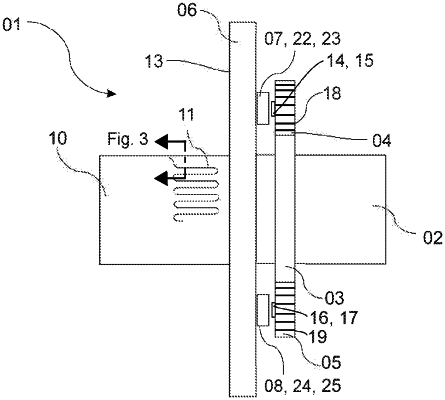| CPC G01D 5/145 (2013.01) [G01L 3/101 (2013.01)] | 20 Claims |

|
1. A sensor assembly for simultaneously determining an angular position and a torque of a rotatable shaft, the sensor assembly comprising:
the rotatable shaft configured to be rotatable by at least −/+360° starting from a zero position;
a main body coupled to the rotatable shaft;
a first body and a second body, each of the first body and the second body rotatably coupled to the main body;
a rotationally fixed circuit board;
two angle resolvers arranged on the circuit board, each one of the two angle resolvers arranged opposite to one of the first and second bodies, and each one of the two angle resolvers configured to supply an angle signal corresponding to one of the first and second bodies;
an evaluation unit arranged on the circuit board, the evaluation unit configured to: i) receive the angle signals supplied by the angle resolvers, and ii) determine the angular position of the shaft from the angle signals received from the angle resolvers; and
a torque sensor configured as a structured, strain-sensitive direct coating on the rotatable shaft, the strain-sensitive direct coating configured to communicate a torque signal to the evaluation unit via a connected connection line, and the evaluation unit configured to calculate the torque on the rotatable shaft from the torque signal, and the connection line includes a wound section wound multiple times around the shaft, the wound section configured to permit the rotation of the shaft, starting from the zero position, by at least −/+360°.
|